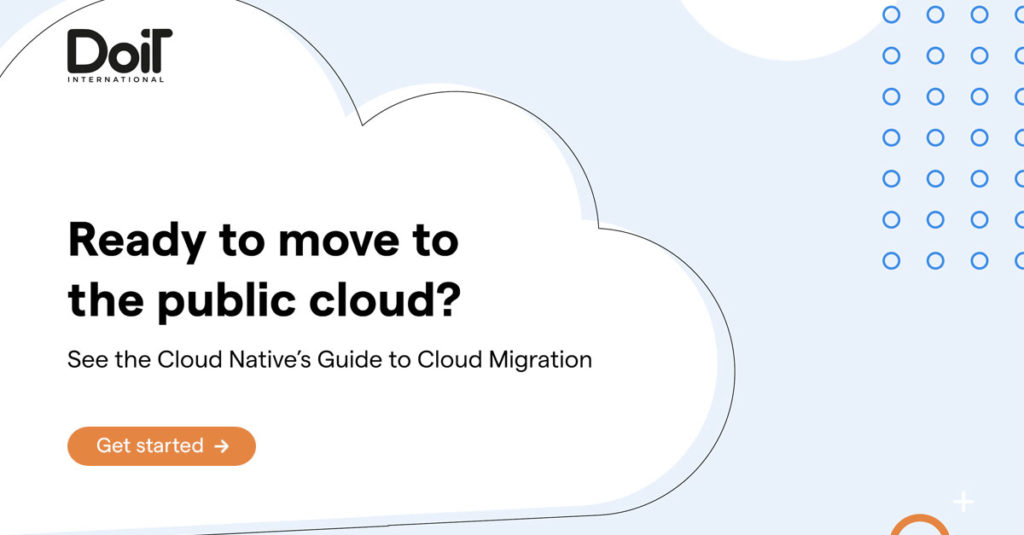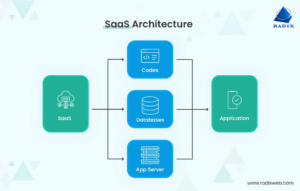While most organizations are in the cloud, few are realizing its true potential
As the push to achieve digital transformation went from business innovation to global imperative, cloud technology emerged as the go-to enabler of efficiency, flexibility and growth. About 90% of companies report some form of cloud adoption, indicating that virtually every company understands that cloud migration is necessary to survive in the modern marketplace.
Companies embrace the cloud as a scalable infrastructure that can make them more agile and efficient, but they could be doing more. The cloud brings together people, data, processes and technology in ways that make truly innovative products and experiences possible. However, many companies are too mired in the complexities of trying to manage their cloud spending and avoid waste to properly harness the possibilities of the cloud.
In this article, we discuss the evolution of cloud adoption, the reasons why organizations may overlook some of the cloud’s significant business benefits and how to embrace its full potential.
The draw of the cloud
For many organizations, cloud migration is a financial decision – at least initially. Perhaps your on-premises equipment needs to be upgraded or you are approaching the end of a data center lease. Either way, you must decide whether to commit to significant new capital expenditure or move to the Opex model enabled by the cloud.
The advent of the Covid-19 pandemic accelerated the process of cloud migration, which many companies had just started. When so much of life’s activity became possible only online, cloud technology provided a lifeline for the world’s businesses. The cloud’s web-based computing services meant employees could work remotely, supply chains could continue to operate and consumers could use services in their homes.
However, organizations further along the cloud adoption journey are exploring far more compelling cloud usage outcomes. The cloud is not just a cheaper way to house your data, it’s a business enabler and accelerant.
Wasted opportunities
Companies know they could be doing more with the cloud. According to a 2021 McKinsey global survey, close to half of CIOs plan to migrate more than three-quarters of all workloads to the cloud in the next two years. But what they will do once those workloads are in the cloud remains to be seen.
Migrating workloads to the cloud does not translate automatically into greater productivity and efficiency — which helps explain why companies estimate that 30% of their cloud spending is wasted. Companies need to deploy to the cloud in a smart way designed to enable operational agility, fast innovation and differentiation.
By prioritizing more productive investments, and perhaps even deferring the migration of massive core legacy systems, organizations can do things like focus on digitizing and automating data capture to enable faster, better decision-making. This sort of value-oriented strategy across IT and businesses allows you to leverage the power of the cloud to full effect.
Foundations for success
Once you have decided to move your workloads to the cloud, realizing its full potential requires a mindset shift to fundamentally new ways of working.
Have a plan
Organizations need to develop a cloud strategy with a clear focus on business value. The optimal strategy ties cloud technology to concrete business cases with positive revenue and cost efficiency opportunities, and ensures that all company leaders share an understanding of how goals will be achieved.
The execution plan must prioritize seamless cloud migration and modernization, ensuring the process is secure, cost-effective and led by people with the appropriate expertise to use the tools and unlock the insights available. With business functions committed to executing a robust cloud strategy and aligning on its objectives, your organization will emerge in a stronger position to harness the innovation enabled with the cloud.
Adopt a cloud-first mentality
Moving to the cloud is not a simple lift-and-shift operation. It requires a fundamental change in attitudes toward things like risk, control and access. Skills honed to manage on-premises servers and applications need to be updated so the organization can provision services instead of hardware and target its processes at consumption rather than capacity. Financial processes must adapt too, exchanging Capex for Opex with the pay-as-you-go cloud model.
A seachange of such proportions is not something most organizations welcome, but transitioning to a cloud-first mentality magnifies the opportunities such a shift can offer. For example, companies that adopt the cloud to deliver the visibility required to meet compliance standards can use the same cloud interfaces to create a platform for selling new digital services.
Involve your people
Non-IT teams may not understand the possibilities of the cloud or feel that cloud migration was foisted upon them because of the pandemic. Just because all your departments are using cloud applications, it doesn’t mean that all of them have even a basic level of cloud knowledge.
Part of the process of harnessing the cloud successfully requires a shift in how you manage your workforce and culture. Rather than pushing the cloud on your employees, include them in the process. Cloud specialists in your IT department can work with business managers to define solutions, starting with small, quick wins to secure buy-in for the process. Ultimately, as business functions start to see the benefits to be gained from the cloud, they will be united behind efforts to extract even greater value from it.
Focus on data
One of the key attractions of the cloud is the power it gives organizations to leverage data for the insights they need to identify opportunities for revenue generation and cost savings. Cloud-based data architectures allow easy access for authorized users to actionable, accurate data, and they enable the organization to centralize storage, management and governance of their data at scale.
Fortunately, organizations seeking to implement big data initiatives have access to ready-made options from the major cloud providers. Cloud advisors and technologists such as DoiT offer support in machine learning and big data to help you unlock industry- and function-specific data insights and intelligence.
However, the cloud will not resolve existing problems with your data. Before migration, source data needs to be audited and any issues resolved. Data degrades over time, so you need to implement controls to ensure its quality. Preparation should also involve strong data governance policies for optimal data quality.
Highlight security and compliance
The cloud dissolves network perimeters and enlarges the surface area that needs to be monitored, creating potential blind spots that bad actors can exploit. Visibility into network-based data becomes more difficult in the cloud, but without endpoint telemetry to alert security teams when key assets are compromised, breaches may not be discovered until they are well advanced.
This issue can be resolved with a robust risk management strategy that balances risk and opportunity with cloud security. Such a strategy should rely heavily on automation to improve security and compliance in infrastructure, application and security operations. Organizations that implement a unified automation strategy minimize the risk of misconfigurations and human error, which are the most common reasons for cloud security breaches. This kind of automation is essential for effective DevSecOps, which integrates security as a responsibility that is shared across the whole IT lifecycle.
Any lingering doubts can be addressed by using a trusted partner to conduct a cloud security review and provide recommendations.
Don’t go it alone
Unlocking the value of the cloud demands a range of skills and depth of knowledge that are difficult for any organization to acquire on its own. This is why it makes sense to rely on expert partners to supplement your own capabilities.
Identifying the right cloud partner for your organization depends on several factors, including your business needs, in-house skills and chosen cloud providers. And with the inherent variability and ongoing development in cloud technology, the smart advice is to find a partner that can scale with you and help you grow. With a technology portfolio customized to simplify your specific needs and expert advice and support, you can unleash the full potential of the cloud to support your business now and into the future.











